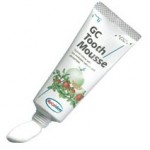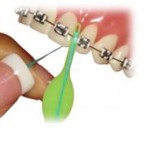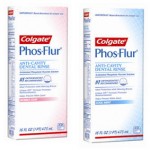 Â Orthodontic patients have higher risk to develop caries as plaque can accumulate rapidly around components of braces. Therefore, it is important to maintain good oral hygiene while getting your teeth straightened.
 Orthodontic patients have higher risk to develop caries as plaque can accumulate rapidly around components of braces. Therefore, it is important to maintain good oral hygiene while getting your teeth straightened.
Below are some tips on how to take care your braces:
-
Use an orthodontic toothbrush to brush your teeth.
Orthodontic toothbrushes are specially designed with features such as V shaped bristles which help to remove plaque around teeth and braces.
 2.    Improve your brushing and flossing skills.
Brushing and flossing with braces on can be a little time consuming, but it is worth the effect to make your teeth healthy and plaque free. Decalcification can occurs easily around orthodontic brackets if plaque is not removed effectively.
Brushing technique with braces:
Brush your teeth by holding an orthodontic toothbrush at 45 degree to the junction between tooth and gum. Move brush across all surfaces in a circular motion.
Interdental cleaning is also important to prevent proximal caries. Super floss (by Oral B) is highly recommended as it has a stiffened end threader for easier manipulation around braces.
Flossing technique with braces:
 Pass a thread of floss under your orthodontic wire and pass it in between teeth.
Besides using dental floss, interdental aids such as interdental brushes can be used to clean larger spaces/gaps and in between wire of dental braces.
It is advisable to bring a dental kit with you wherever you go to allow you to brush after  meals, they should contain:
-Â Â Â Â Â Â A small mirror
-Â Â Â Â Â Â An orthodontic toothbrush
-Â Â Â Â Â Â An interdental brush
-Â Â Â Â Â Â A mini floss kit/floss threader
-Â Â Â Â Â Â A travel size toothpaste and mouthwash
3.    Rinse after meal
Food can stuck easily in between brackets and gaps. So, it is best to brush your teeth after every meal to keep teeth clean and prevent social embarrassment. However, if brushing is not possible after every meal, you should rinse thoroughly with water to prevent plaque stagnation and to remove food debris stuck in between brackets.
4.    Mouth rinse
Rinse with mouthwash after brushing to enhance oral hygiene. Mouthwash has anti bacterial ability to reduce bacteria activity and reduce irritation that may develop from braces. There a lot of companies that offer mouthwashes which are formulated especially for orthodontic patients to prevent caries and white spot lesions.
5.    Diet
Avoid hard foods such as ice cubes, popcorn kernels, nuts etc to prevent breakage of brackets and bending of wires. Eating might be difficult after braces are tightened as your gums might feel sore. One way to overcome this is by consuming soft foods or by cutting food into smaller pieces. Sticky and starchy food should also be avoided because bacteria in dental plaque can convert sugar into forms of energy and cause formation of caries.
                                                 6.    Apply other dental products to strengthen teeth.
            6.    Apply other dental products to strengthen teeth.
Recaldent products such as GC MI paste are derived from milk. They can be used during and after orthodontic treatment to prevent and remineralise white spot lesions.
 7.    What should you do to relief soreness and irritation from components of braces?
When tooth moves, arch wire may get displaced. It can cause irritation to your oral mucosa and produces traumatic ulcers. You can apply products like Orajel to ulcers or coat the metal part with orthodontic wax to relief pain. If pain continues or worsens, you should inform your orthodontist about it. Drugs to relief pain can be used but it can hinder and slow down tooth movement. Click the link below to read more about orthodontic wax.
 8.    Playing sports
Orthodontic users should be extra careful or wear a mouth guard while playing sports to prevent injury from metal components of braces.

